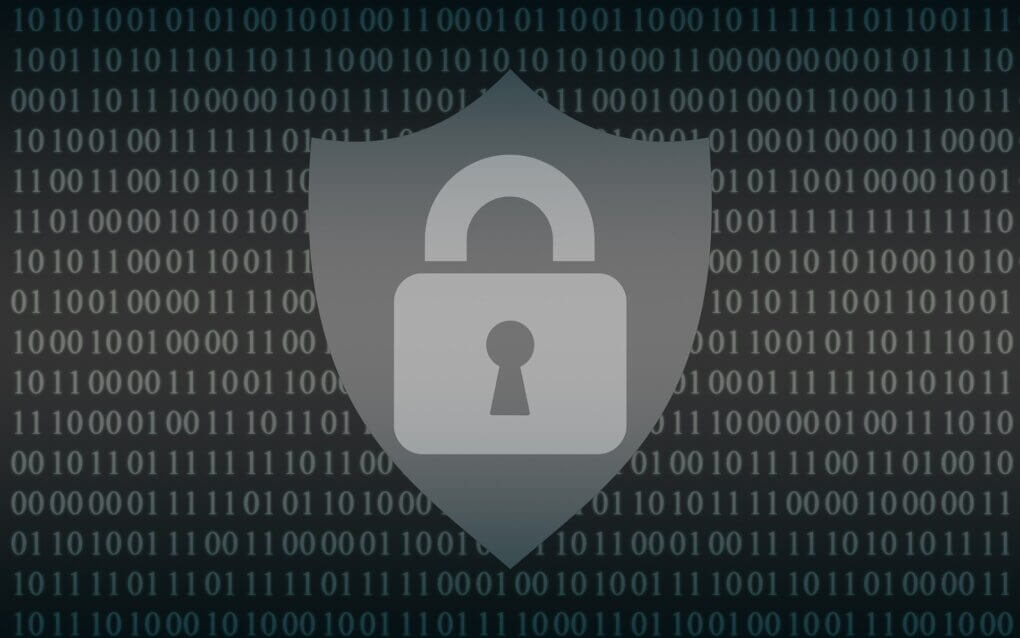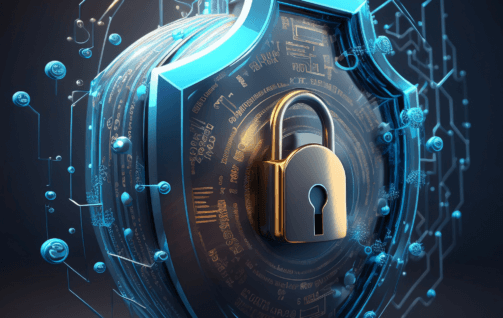With the increasing number of online businesses, digital transformation, and the adoption of continuously changing technological trends, it is safe to say that cybersecurity will forever remain a relevant topic. As long as people, institutions, and businesses depend on computer systems and the implementation of better and faster IT augmentations, they will also have to simultaneously think about securing those systems with the best cybersecurity standards and frameworks.
Just a month ago in 2024, Microsoft Azure fell prey to malicious cybercriminals that managed to cause a massive data breach, exposing the names and accounts of a slew of top-level Microsoft executives.
The point is that there is no escaping the possibility of experiencing a cyberattack for both individuals or businesses. Every company, big or small, must have a well-articulated and expertly implemented cybersecurity infrastructure and methodology in line with world-renowned online security standards.
In light of this, we’re going take a comprehensive dive into the world of cybersecurity frameworks, and explain their importance, the types available, and their benefits.
A Glimpse into Understanding Cybersecurity Frameworks
Industry-standard cybersecurity frameworks are designed to provide corporate network infrastructures with powerful online protection against the threat of evolving malicious software and techniques. They offer a broad-spectrum category of best practices and in-depth guidelines that help companies and institutions safeguard their sensitive and mission-critical digital assets.
Regardless of what type of business you have, implementing a renowned and globally trusted cybersecurity framework will allow you to add multiple protection layers and digital strategies to safeguard your critical system data and network architecture.
In addition, cybersecurity standards and frameworks are, at times, compulsory or, at the very least, immensely important to implement, for organizations that want to adhere to the compliance and regulatory requirements set forth by a developed country.
For example, businesses operating in the credit card sector overseeing millions of transactions are legally required to adhere to every PCI DSS compliance. Similarly, if you want to start a healthcare business, you will have to comply with HIPAA. Moreover, educational institutions such as schools and colleges have to comply with FERPA. These are all cybersecurity standards that businesses in these industries have to stringently adopt and adhere to.
The industry standard online security protocols offer structured guidelines for determining and categorizing (based on priorities) the implementation of critical cybersecurity performance and for the constant monitoring and optimization of their intended functionalities.
By complying with a cybersecurity standard relevant to your industry or area of business, you will be able to garner trust among your customers, key stakeholders, and partners – proving that you are indeed committed to multifaceted cybersecurity methodologies to protect their identity and data. This can also be a very important element for boosting your competitor’s differentiator factor, especially in the modern digital corporate ecosystem.
These cybersecurity standards and frameworks don’t just help businesses comply with all the necessary regulatory specifications but also function as powerful tools for the following:
- Reducing exposure to cybersecurity vulnerabilities and risk.
- Optimizing your digital ecosystem and network infrastructure.
- Helps boost investor and consumer trust and confidence.
- Provides continued support for organizational growth.
- It functions as a testament to your dedication and strive for digital security excellence.
In all, choosing a type of cybersecurity framework or the other can, for the sake of understanding its significance, be the same as selecting the right weapon for battle.
It is very important to analyze your particular requirements, making sure that the framework used offers comprehensive cybersecurity guidelines for continuous and constantly evolving protection against consistently changing threats while also ensuring that your company remains compliant with the necessary regulations and industry standards.
Vital Elements of a Cybersecurity Framework
An effective and industry-relevant cybersecurity framework can be likened to a well-oiled machine. Each element and functionality of the framework work in harmony with one another, systematically enabling you to combat and proactively minimize the threat of a cybersecurity breach.
One of the main components of cybersecurity standards and frameworks is risk assessment, which duly categorizes which one of your digital assets or network architectures is more at risk of a cyberattack. Cutting-edge cyber risk assessment strategies help businesses develop a constantly evolving environment of accountability and foster a risk-aware culture.
Another equally important factor of this machine is the implementation of the best security management control, which is specifically created to safeguard your digital assets, protecting you against external and internal cyber threats. Developing the right cybersecurity policies, implementing continuous network tracking and monitoring, and integrating daily risk management functionalities are also fundamentally vital elements of a cybersecurity framework.
But do keep in mind that implementing a digital security and protection framework is not a cookie-cutter solution and it is not going to be a one-time process. Deploying industry-level cybersecurity standards and policies will always be an ongoing process that needs to consistently evolve with changing industry trends and best practices, helping you manage your network security protocols just as efficiently and effectively.
Looking Into Some of the Most Widely Used Cybersecurity Frameworks in the World
While there are plenty of cybersecurity standards that you can implement, it is important to understand how to navigate the selection process, which can be daunting. However, to make things easier, we’re going to talk about some of the most widely used cybersecurity standards and frameworks in the world.
The CIS Framework (Center for Internet Security) Critical Security Controls
If you’re just starting a company or have already established one and want to slowly yet consistently expand, the CIS standard could be a surefire way to go. The CIS framework was created in the latter part of the 2000s with the specific objective of helping companies prevent and thwart cyberattacks and potential threats.
It comprises 20 controls that are regularly updated via a panel of some of the best security specialists spanning multiple fields and industries such as government, academia, and industrial. CIS employs the use of benchmark cybersecurity strategies on a variety of common standards such as NIST and HIPAA.
It essentially maps a variety of powerful and upgraded cybersecurity protocols and provides a slew of different options for configurations for companies and institutions that do not have to comply with standard cybersecurity protocols but wish to continually optimize their network security.
The NIST Framework (National Institute of Standards and Technology)
The NIST cybersecurity standard was essentially curated and developed by the Obama Administration to provide optimized strategies to protect and boost critical infrastructural network architectures. It was made as a direct consequence of Executive Order 13636 during Obama’s presidency. The NIST cybersecurity standards and frameworks were also created to safeguard the US’s most sensitive and vital infrastructure such as power plants, dams, etc.
The ISO 27001/27002: International Standards Organization
This globally recognized and used cybersecurity standard is also known as ISO 270K. It is widely used by businesses and institutions operating throughout the world, providing cutting-edge security configurations to safely operate both internally and externally via third-party operators.
ISO 270K automatically assumes that the company or institution already has an ISMS (Information Security Management System). It requires very expansive and intensive management processes for companies to proactively secure themselves against security vulnerabilities and cyberattacks.
The HIPPA Framework (Health Insurance Portability and Accountability Act)
The HIPPA cybersecurity protocol framework was specifically created for supervision and securing critical and confidential information and data for both patients and other consumers, strengthening an institute’s privacy policies. Healthcare and other similar companies and institutions are legally mandated to comply with the HIPPA legislation in the US, safeguarding digital healthcare information for both insurance companies and healthcare providers.
The Necessity of Cybersecurity Frameworks
Cybersecurity frameworks are absolutely critical in helping companies and organizations eliminate any type of guesswork from formulating and implementing security protocols to protect their mission-critical digital assets.
These cybersecurity standards and frameworks enable IT security specialists and managers to streamline guidelines, allowing them to effectively and systematically minimize the chances of cyberattacks and experiencing potential security vulnerabilities no matter how sophisticated the network environment is.
Businesses and institutions using these standards and frameworks will find it infinitely simpler to continuously adapt or modify their cybersecurity strategies to build better and more customized network protection protocols both internally and externally.
Knowing How You Should Select a Cybersecurity Framework
The type of cybersecurity framework you choose will depend on a variety of factors. You will need to determine and assess elements such as the industry you operate in and the mandatory complication specification you need to adhere to in that industry. For example, organizations that are traded publicly or private companies may want to go with ISO 270K while medical companies or healthcare providers must comply with HIPPA standards.
The standard and security protocols, along with a variety of others, can be very useful in helping IT administrators and network security specialists implement a more streamlined and effective cybersecurity program.
The Importance of Collaborating with Reputed Managed Services Providers (MSPs)
In your effort to implement the best cybersecurity standards and frameworks, MSPs or managed services providers will become your most important partners. Why? Well, companies such as Corporate Technologies can help make the security transformation less daunting and more effective thanks to their niche specializations and network resources. In light of this, Corporate Technologies will help you:
- Choose the best security framework and help maintain those standards across the board.
- Make sure that your frameworks are in line with the current industry standards.
- Provide you with innovative resource management expertise, driving costs down.
Bottom Line
So there you have it, a comprehensive breakdown of what cybersecurity standards and framework are, why they are important, and why you need to partner with a dedicated and experienced managed services provider. Understand that selecting the best and most well-suited framework is a vital step towards implementing powerful cybersecurity measures to protect your critical data, strengthen your privacy policies, secure your customer data and information, and enhance your brand reliability and reputation.





